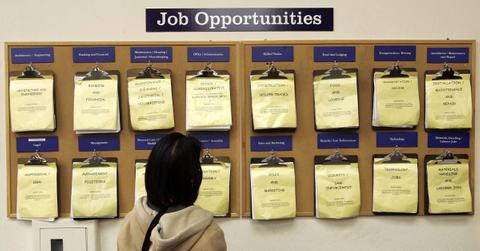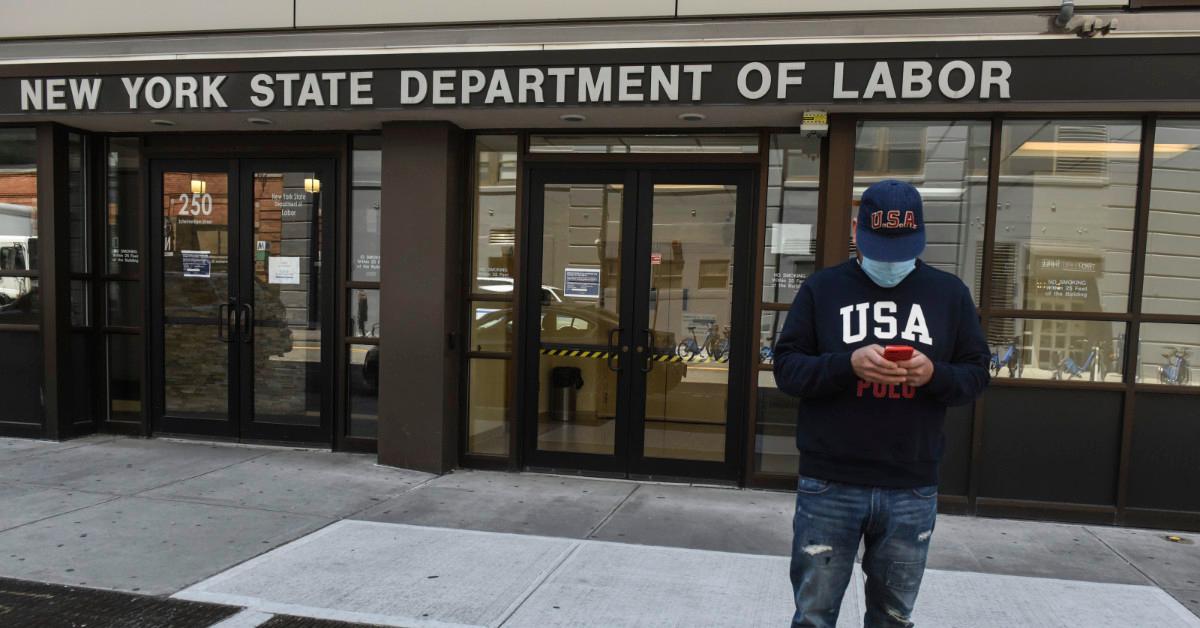The Average Unemployment Check Can Vary by Hundreds From One State to Another
The average unemployment check in U.S. states and territories can vary by hundreds, from below $200 to above $500. Here's why.
Feb. 16 2022, Published 7:19 a.m. ET

Unemployment benefits are back to usual levels after federal pandemic unemployment programs ended in Sept. 2021. What's the average unemployment check, anyway?
The U.S. Department of Labor’s Employment & Training Administration offers monthly program and financial data for a “quick overview” of unemployment insurance in U.S. states and territories. According to the latest data available—from Dec. 2021—the average weekly benefit for all U.S. workers was $376.27. But that’s just the national average. In some states and territories, the average is below $200, and in others, it's close to $600.
The averages range from $194 to $594

According to the Dec. 2021 data, Louisiana and Puerto Rico had the lowest average unemployment benefits, both averaging below $200. The Virgin Islands, Massachusetts, and Washington state, meanwhile, had the highest averages, all well above $500.
| State | Average weekly benefit (Dec. 2021) |
|---|---|
| Alabama | $251.83 |
| Alaska | $282.11 |
| Arizona | $236.59 |
| Arkansas | $275.52 |
| California | $320.39 |
| Colorado | $420.49 |
| Connecticut | $420.53 |
| Delaware | $300.06 |
| District of Columbia | $389.08 |
| Florida | $243.06 |
| Georgia | $312.92 |
| Hawaii | $490.41 |
| Idaho | $368.56 |
| Illinois | $385.09 |
| Indiana | $269.36 |
| Iowa | $451.60 |
| Kansas | $424.86 |
| Kentucky | $371.44 |
| Louisiana | $193.96 |
| Maine | $372.33 |
| Maryland | $347.22 |
| Massachusetts | $555.83 |
| Michigan | $335.90 |
| Minnesota | $471.62 |
| Mississippi | $210.38 |
| Missouri | $274.89 |
| Montana | $456.20 |
| Nebraska | $378.31 |
| Nevada | $364.93 |
| New Hampshire | $302.79 |
| New Jersey | $495.15 |
| New Mexico | $348.94 |
| New York | $382.45 |
| North Carolina | $233.41 |
| North Dakota | $486.80 |
| Ohio | $408.66 |
| Oklahoma | $346.36 |
| Oregon | $415.55 |
| Pennsylvania | $423.31 |
| Puerto Rico | $195.75 |
| Rhode Island | $405.45 |
| South Carolina | $273.84 |
| South Dakota | $397.17 |
| Tennessee | $234.93 |
| Texas | $437.35 |
| Utah | $454.10 |
| Vermont | $422.73 |
| Virgin Islands | $593.71 |
| Virginia | $360.48 |
| Washington | $547.40 |
| West Virginia | $300.21 |
| Wisconsin | $327.88 |
| Wyoming | $425.30 |
| United States | $376.27 |
Of course, the dollar goes further in some states and territories than others. Forbes recently ranked the states with the best and worst unemployment benefits after accounting for average unemployment benefits, cost of living in the area, and how long benefits are provided. In that ranking, Kansas came in first, while Florida placed last. (Most states offer 20 to 26 weeks of unemployment benefits, Forbes pointed out, but Florida offers just 12.)
When it comes to unemployment calculations, “some of it is economics, and some of it is politics”
The Economic Policy Institute explains that states use complex formulas to calculate workers’ weekly benefits, and that weekly benefits are usually capped at some multiple of the average weekly wage for all workers in the state. Mississippi, for one, capped the maximum weekly benefit at just $235 in 2020, the institute adds.
“The maximum benefit differences between states reflect differences in visions for what unemployment insurance is for and who really needs it,” Andrew Johnston, an assistant economics professor at the University of California at Merced, told Forbes.
And states give unemployed workers only a fraction of their old paycheck to discourage them from not returning to the workforce. “States vary in how strongly they consider this disincentive to work and how large they consider this concern to be,” Brookings Institution economics fellow Mallika Thomas explained to Forbes. “Some of it is economics, and some is politics.”
Research shows that pandemic-era unemployment supplements had a small effect on the labor market
After studying unemployment benefits while the pandemic unemployment programs were still in effect, University of Chicago researchers found that two-thirds of workers were making more from unemployment than from working. They also found that one of five eligible unemployed workers was receiving benefits of at least twice the amount of the earnings they had lost.
Despite concerns of unemployment recipients resting on their laurels amid these expanded benefits, Brookings points out that the labor market seems to have been only slightly affected. University of Chicago researchers estimated that the $600 supplement reduced employment by less than 0.8 percent and that the $300 supplement reduced employment by less than 0.5 percent.
